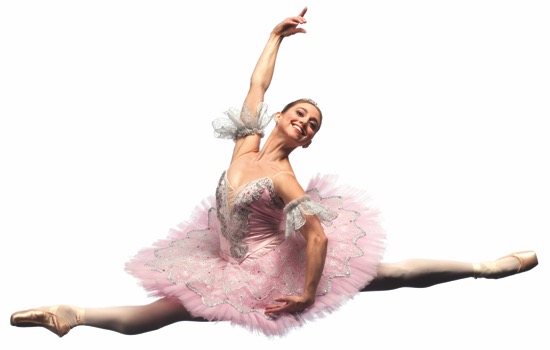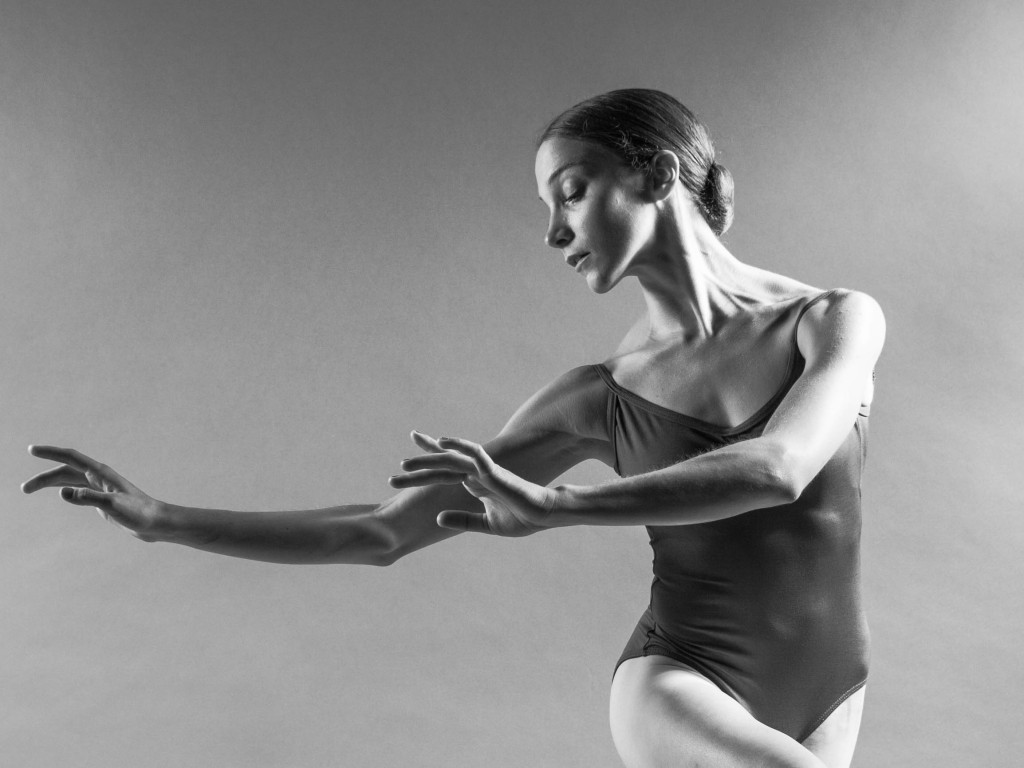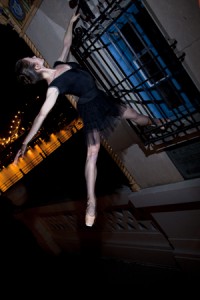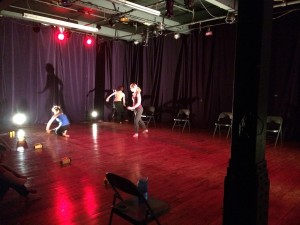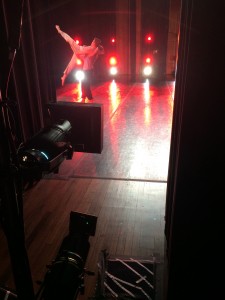
by Cara Marie Gary
As a young ballet student or aspiring professional dancer, some big challenges in life usually center around getting into a top summer program, performing well in a competition, or landing that first contract with a professional company. These were certainly part of my experience, but now as a professional dancer with some seasoning and experience, the challenges that I face on a daily basis are different, but just as important.
Pain Management
One of the top challenges in my life as a dancer is dealing with and learning to appropriately manage pain. Fortunately, I haven’t had any major injuries while dancing professionally, but aches in my body are a daily struggle, as an average five-day rehearsal week consists of approximately 38 hours of dancing. Each morning I wake up refreshed, but often with minor aches and pains, and over the years, I’ve found some helpful remedies for this challenge. I often consult with my physical therapists about the pain I’m experiencing and they always offer specific strengthening exercises for weak areas that could be linked to the source of pain.
It’s simply part of my daily routine for my joints to snap, crackle, and pop, especially in the morning, and even though I’m used to these noises, I try to make monthly appointments with a chiropractor for proper treatment. I’ve also learned to explore and experiment with alternative techniques and have discovered a lot about what works for my body. For example, I tend to hold a lot of tension and stress in my upper back and neck. I’ve found that the best remedy for this area of pain is a technique called “cupping”. It’s an ancient form of alternative medicine that uses cups and heat to create a suction that pulls the fascia tissue towards the cup, ultimately mobilizing blood flow to promote healing. The cups are normally left on for about fifteen minutes, and once they are removed I feel an immediate release of tension and have a noticeable increased range of motion in my upper back and neck areas. This technique creates dark circles where the cups where placed, and often times my co-workers joke that it looks like I got attacked by an octopus, but I don’t mind, because cupping works miracles for me!

When my calves or hamstrings are hurting, I’ve undergone a technique called “dry needling”. This is a process similar to acupuncture, but a little more invasive, because the needle is inserted into the skin and muscle. Sometimes, the sensation of the needle hitting a trigger point makes me almost jump off the table, but the certified physical therapists are quick and efficient. At times I’ll be a little sore the next day, but the overall result pays off with lasting relief in the areas that have been targeted.

My favorite treatment, of course, is a massage – but not one of those gentle, relaxing, soft-music-playing-in-the-background kinds. I find that deep tissue massage is the best to help release knots and improve circulation. In contrast, my least favorite treatment is the ice bucket. Although it is effective, I tend to hold off on using this treatment until I can no longer stuff my swollen feet into my pointe shoes (Nutcracker season is often the culprit). Everyone has a different pain tolerance, but it’s important to not just push through the pain. Instead of continuing to torture my body, I’ve learned how important it is to deal with pain intentionally, and to find specific and effective ways to care for myself.
Personal vs Professional Life
Another challenge I face as a dancer is separating my work from my personal life. Although I’m passionate about dancing, I’m normally in the studio eight hours a day, five days a week, and I feel it’s important to focus on other interests and activities once work is completed for the day. To tackle this challenge, my roommate (also a dancer with The Joffrey Ballet) and I came up with some “house rules”.
First, we are intentional about limiting talk about work when we’re at home, and we also make sure to leave “work duties” at work – that means no bringing pointe shoes home to sew! Instead, we focus our attention on other aspects of our lives. For example, we try new recipes and often cook together, and instead of watching dance-related videos, we might turn to Netflix for a less-connected escape from reality.

We both enjoy art in other forms and have unashamedly bought into the growing phenomenon of the therapeutic adult coloring books, and I sometimes paint while my roommate designs and sews clothing for herself and others. I also enjoy crocheting, (I usually have a project or two going at a time), and on weekends I like to add brunch or a Bikram yoga class to the mix. As dancers, it’s important to recognize that we work in a very unique artistic bubble, and I’ve found that it’s healthy (and fun!) to develop boundaries and a balance between my work and my personal life.
Adapting To Change
A final challenge I face as a dancer is learning to adapt to change. I’ve found that it’s necessary to be versatile in all aspects of what my job demands. The beautiful thing about our art form is that it is constantly evolving, and dancers often have to learn to adapt to new choreography and styles as ballet and dance continue to push boundaries. It’s important to not be timid and learn to be bold when exploring new styles of movement. l try to watch and learn from fellow artists and apply corrections from ballet masters and choreographers, and I’ve found it always goes a long way to be polite and respectful to the people surrounding you as you learn together.
Dancers also have to adapt to occasional disappointments at work. Like any other job, there will be good days and bad days. Sometimes you show up to work and feel great when you’re completely on your leg and feel like you’ve had some really productive rehearsals or successful performances. Other days you might deal with situations like dealing with a painful ache, experiencing unwanted casting changes, or not seeing your name next to a desired role. I think it’s important to avoid focusing on the drama or negative feelings on those bad days. Instead, it’s important to open up your horizons to inspiration not only in the workplace, but also outside of that “ballet bubble”. That could be through studying something new, getting involved in organizations about an issue or community that matters to you, or simply getting out in your city and appreciating what makes the world around you unique.
As humans, we’re often creatures of habit and resist change, but I’ve come to realize that change is the only constant in life. Accepting this fact and learning to move forward has been an ongoing task, and I find that I deal with this challenge most successfully by choosing to adapt and learn from each experience.
Though the challenges that I now face as a professional dancer are different than my days as a young student, pursuing this career has certainly always kept me pushing myself to learn and improve in new settings and environments. Since the opportunity to dance as a career has become my daily reality, I’ve learned that challenges will always keep coming, but life is too short to not enjoy each moment. I challenge aspiring dancers to not be discouraged by the challenges they face, but to find something positive in every day, and use that determined perspective to keep moving toward their goals.

Contributor Cara Marie Gary is a native of Belton, South Carolina. She joined The Joffrey Ballet in July 2012. Prior to joining The Joffrey Ballet, Ms. Gary danced with American Ballet Theatre’s ABTII and was an apprentice with Orlando Ballet. Ms. Gary began her formal ballet training at International Ballet Academy in Greer, South Carolina, under Hennadii Bespechnyi and Vlada Kvsselova. Ms. Gary received additional training at summer intensives with American Ballet Theatre, Brianskv Saratoga Ballet Center, Ukrainian Academy of Dance South Carolina Governors School, Ballet Spartanburg, and Chautauqua Institution. Ms. Gary graduated with honors from Belton-Honea Path High School and is currently pursuing a Business Administration degree online through North Greenville University.
In 2010, Ms. Gary was a competitor in the IX USA International Ballet Competition held in Jackson, Mississippi. She was a top twelve finalist in the Youth America Grand Prix National Finals in 2008 and 2009. She also received the overall Grand Prix Award in the 2009 YAGP regional semi-finals. In 2006, she was awarded a Diploma of Laureate at the VI Serge Lifar International Ballet Competition held in Kiev, Ukraine.
Ms. Gary has had the opportunity to tour throughout the United States and Europe. Ms. Gary has performed the title role in classical ballets such as The Nutcracker, La Sylphide, Don Quixote, Paquita, Markitanka pas de six, and Coppelia. Her repertoire with ABT II includes roles in the Flame of Paris pas de deux, Jerome Robbins’ Interplay, Antony Tudor’s Continuo, George Balanchine’s Allegro Brillante and Stars and Stripes pas de deux, Jessica Lang’s Vivace Motifs, Roger Vanfleteren’s Pavlovsk, Jodi Gate’s A Taste of Sweet Velvet, Aszure Barton’s Barbara, and Edward Liang’s Ballo Per Sei. Ms. Gary has performed roles in new choreography by Robert Hill. Her repertoire with Orlando Ballet also consists of Sleeping Beauty, The Nutcracker, and Swan Lake.





